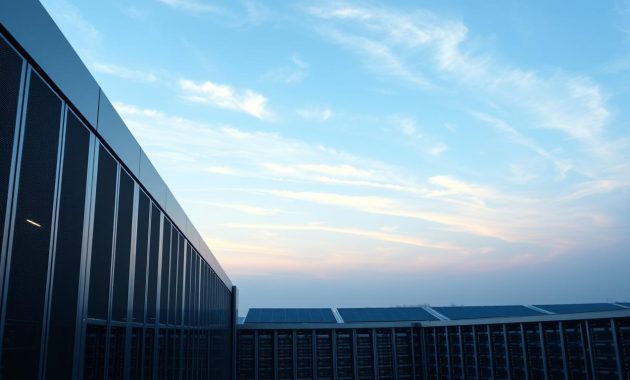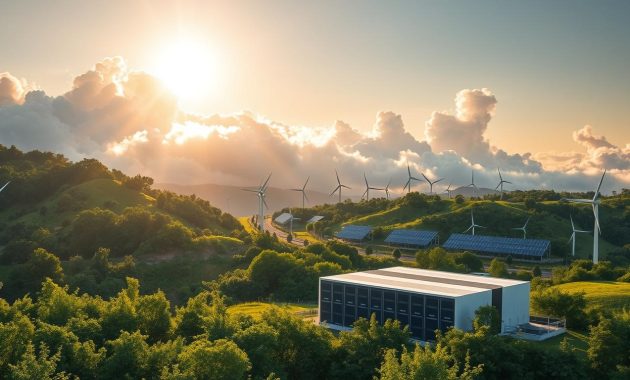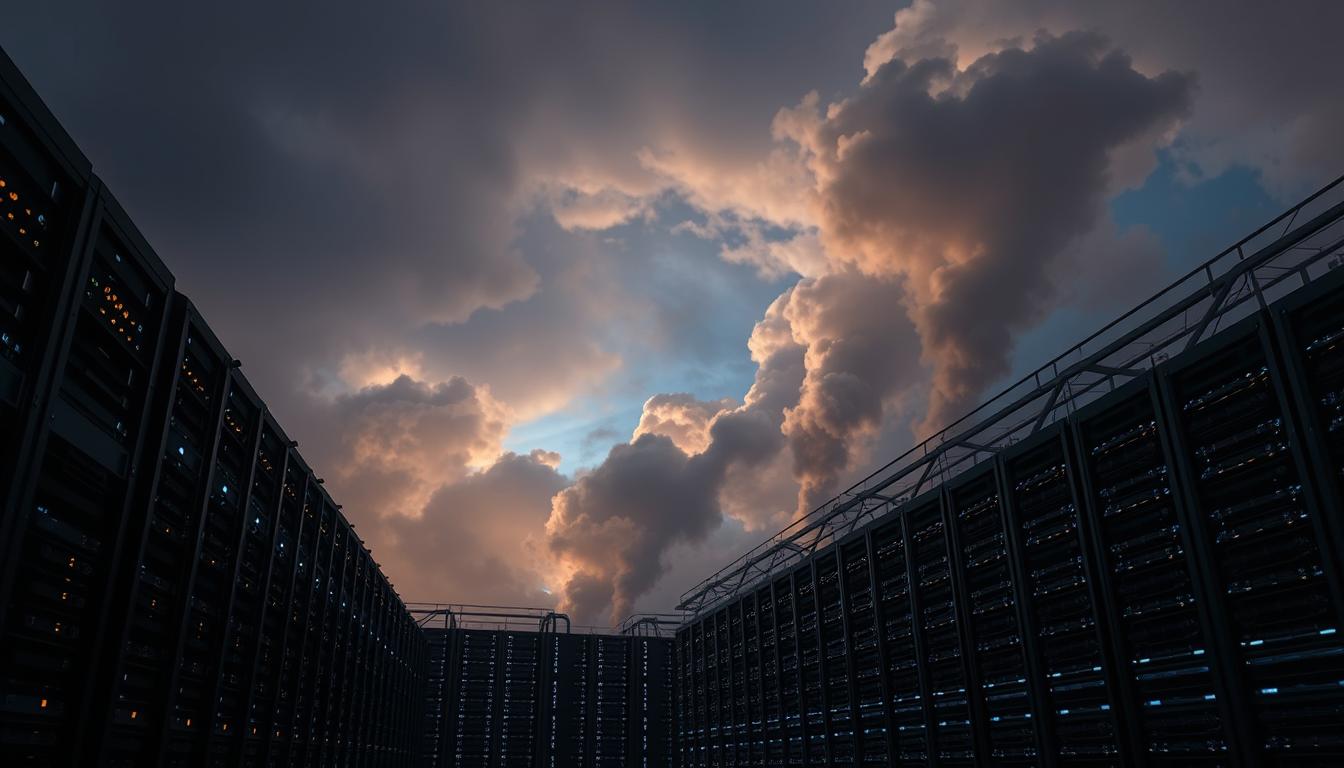In the realm of IT, the environmental footprint of your server choices is paramount. The transition to cloud servers has become increasingly prevalent, driven by their scalability, efficiency, and environmental benefits. Cloud servers present a more streamlined approach to data management, potentially leading to a diminished ecological footprint compared to traditional servers.
Assessing the environmental repercussions of traditional servers reveals a considerable carbon footprint, stemming from energy consumption and waste generation. Conversely, cloud servers emerge as a more eco-conscious alternative, enabling a reduction in carbon emissions and fostering a greener IT ecosystem. Opting for cloud servers over traditional ones not only mitigates environmental harm but also fulfills your IT requirements.
Understanding Traditional Server Infrastructure
In assessing your current infrastructure, it is imperative to acknowledge the ecological repercussions of traditional servers. These servers, housed on-premise, necessitate considerable energy for operation and cooling. This energy demand significantly escalates energy consumption and profoundly impacts the environment.
The constituents of traditional server farms, encompassing servers, storage systems, and networking apparatus, exacerbate waste generation. Upon obsolescence, these devices frequently culminate in landfills, thereby augmenting the burgeoning issue of electronic waste. It is paramount to contemplate the long-term ecological repercussions of traditional server infrastructure, encompassing the energy needed for operation and cooling, alongside the waste generated by superseded equipment.
Several critical aspects must be considered when evaluating traditional server infrastructure:
- Energy consumption: Traditional servers necessitate a considerable amount of energy for operation, resulting in elevated energy expenditures and a heightened carbon footprint.
- Waste generation: Superseded or obsolete apparatus contributes to electronic waste, which can have severe environmental repercussions.
- Traditional server infrastructure: This infrastructure type is generally less efficient than contemporary alternatives, leading to increased energy consumption and waste generation.
To mitigate the adverse environmental impacts of traditional server infrastructure, it is crucial to explore alternative solutions that emphasize efficiency and sustainability. By comprehending the ecological effects of traditional server infrastructure, you can make informed decisions regarding your IT infrastructure, thereby reducing your carbon footprint.
The Rise of Cloud Computing Solutions
In the realm of IT infrastructure, the advent of cloud computing solutions presents a paradigm shift, offering substantial advantages over traditional server-based systems. This paradigm shift enables the dynamic scaling of IT resources, obviating the necessity for extensive on-premise infrastructure. Consequently, it diminishes energy consumption and waste generation, thereby promoting environmental sustainability. The inherent flexibility of cloud computing solutions empowers businesses to adapt swiftly to evolving market demands.
Cloud server technologies are engineered to deliver scalability and efficiency, thereby optimizing IT resource utilization and curtailing operational expenses. By embracing cloud computing solutions, enterprises can harness the most advanced technologies and innovations without incurring substantial initial investments. This strategy liberates businesses to concentrate on their core competencies, entrusting the management of IT infrastructure to cloud service providers.

- Reduced energy consumption and lower costs
- Increased scalability and flexibility
- Improved efficiency and productivity
The adoption of cloud computing solutions not only yields these advantages but also contributes to environmental stewardship. The capability to scale IT resources in real-time minimizes waste and enhances resource utilization, fostering a more sustainable and efficient IT ecosystem.
Environmental Advantages of Cloud Servers
In the realm of cloud computing, the environmental benefits of cloud servers are paramount. They enable businesses to diminish their energy consumption and carbon footprint, thereby fostering a more sustainable future. Cloud servers surpass traditional servers in environmental stewardship, boasting reduced energy usage, diminished carbon footprint, and optimized resource allocation.
The cornerstone of cloud servers’ environmental prowess lies in their reduced energy usage. These servers are engineered to achieve maximum energy efficiency through the deployment of cutting-edge technologies such as virtualization and containerization. This strategy empowers businesses to curtail their energy consumption and subsequently lower their carbon footprint, leading to a more eco-friendly operation.

- Lower energy consumption
- Reduced carbon footprint
- Effective resource allocation
Adopting cloud servers allows businesses to harness these environmental benefits, contributing to a greener future. These servers present a compelling choice for enterprises aiming to minimize their ecological footprint while enhancing operational efficiency.
Challenges of Cloud Server Adoption
Adopting cloud servers necessitates a thorough examination of the associated hurdles. Chief among these is the imperative of data security, a critical factor in safeguarding sensitive information. It is paramount to guarantee the confidentiality and integrity of your data, alongside the reliability of your internet connection for seamless access to cloud-based systems.
The adoption of cloud servers is not without its challenges, including:
- Dependence on internet connectivity, which can be affected by outages or slow speeds
- Misconceptions about cloud sustainability, which can lead to unrealistic expectations about the environmental benefits of cloud computing
- Challenges related to data security and privacy, such as ensuring compliance with regulations and protecting against cyber threats
In assessing the adoption of cloud servers, it is imperative to balance these challenges against the advantages of cloud computing, notably its scalability and efficiency. By comprehending the potential challenges and implementing measures to address them, you can ensure a successful transition to cloud servers. This will maximize the benefits of cloud server adoption for your enterprise.
Making Informed Choices for Your Business
In the realm of IT, the imperative to make informed choices cannot be overstated. An evaluation of your current infrastructure, coupled with the adoption of best practices for sustainable IT, is paramount. This approach not only diminishes your company’s ecological footprint but also paves the way for long-term success. Anticipating future trends in green computing is equally crucial, as it enables your organization to leverage cutting-edge technologies and innovations. Such foresight is essential for achieving sustainability goals and solidifying your company’s position in the market.
Evaluating Your Current Infrastructure
An exhaustive examination of your IT infrastructure is imperative. This process should uncover opportunities to enhance energy efficiency, reduce waste, and deploy more efficacious solutions. Such an evaluation will furnish you with critical data, enabling more informed decision-making and facilitating a transition towards a more sustainable IT framework.
Best Practices for Sustainable IT
Adopting best practices for sustainable IT within your organization is a strategic imperative. This may involve the utilization of cloud computing, the implementation of green data center practices, and the promotion of energy-efficient hardware and software. Such actions are instrumental in reducing your company’s ecological impact and contributing to a more sustainable future.
Future Trends in Green Computing
It is vital to remain abreast of emerging trends and innovations in green computing. Investigate advancements in renewable energy, sophisticated cooling technologies, and eco-conscious data center designs. By embracing these future trends, your company can emerge as a vanguard in sustainable IT, positioning itself at the forefront of environmental responsibility.
